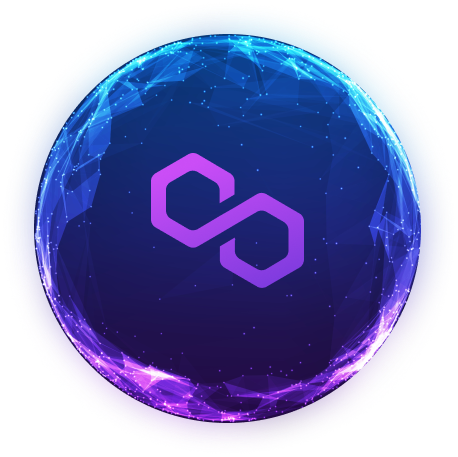XP.NETWORK and Polygon:
hundreds of NFTs transferred
from Harmony,
VeChain,
Velas & other chains

XP.NETWORK and Polygon: hundreds of NFTs transferred from Harmony, VeChain, Velas & other chains
PROJECT OVERVIEW
PROJECT OVERVIEW
Polygon is very attractive to NFT projects, because it is supported by OpenSea and offers near-zero fees. In this case study, we’ll tell you about some of the collections we helped expand to Polygon and why it’s one of the most popular destination networks on our NFT bridge.
polygon.technology

Polygon: the cheapest EVM chain supported by OpenSea
The NFT space has embraced the multichain future, with thriving ecosystems on alternative chains like VeChain, MultiversX, Harmony, and so forth. XP.NETWORK NFT bridge supports 24+ of them.


NFT transactions require several checks and changes of the contract storage, so on
older-generation networks they result
in high fees and slow processing if the
priority
fees are not set to high. No wonder that project teams look for faster, cheaper chains
to launch metaverses and Play2Earn games. Some blockchains have special token standards
that are much better optimized for NFTs than ERC-721, and the minting fees are close to
zero.
However, launching a game on a lesser-known blockchain creates a marketing problem. The chain can have a very active NFT community of its own, but how do you make your project known outside of that community? It’s not easy to bring in users from the outside and motivate them to try a new chain.
Traditionally the best way to access big NFT audiences and liquidity is to list a collection on OpenSea. Even with the explosive rise of Blur in 2023, it’s still the second-biggest in the world by volume.
The issue is that OpenSea supports only a few networks: Ethereum, Polygon, Solana, BNB Chain, Avalanche, Arbitrum, and Optimism. So if your collection resides on a chain that’s not on the list, you’ll need to bridge it to list on OpenSea.
Expanding a collection to a new chain isn’t a problem: XP.NETWORK allows you to bridge hundreds and even thousands of NFTs at once and save on fees. But which of the chains on OpenSea is best?
Polygon is a logical choice. An NFT transfer on Polygon costs less than $0.01 vs. $5-6 on Ethereum and $0.5 on BNB Chain. It’s also very fast. Sure, Solana is fast, too, but Polygon is an EVM chain (in fact, it was built as an Ethereum sidechain), so many Ethereum users are familiar with it.
Polygon isn’t the fastest: it takes a couple of minutes to fully confirm a transaction, in spite of the high TPS. Still, considering the fees, a large ecosystem, and a global exposure on OpenSea, it’s a good alternative to Ethereum. We receive a lot of requests to bridge NFT collections to Polygon, including from non-EVM chains. Below we’ll list some of them.
3 NFT projects bridged to Polygon that you should check out
We’ve selected three projects to demonstrate the variety of blockchains from which projects are bridged to Polygon.
Rocket Monsters
Bridged from: Harmony One
Rocket Monsters is a Play-and-Own universe filled with playable NFTs: characters,
weapons, virtual land, etc. The game is created using Unreal Engine 5. You can build
structures, engage with other users in PvP battles, etc.


Rocket Monsters integrated XP.NETWORK’s bridging widget, so that holders can easily send NFTs
between Harmony, Polygon, Ethereum, and Tezos.
The default collection – Rocket Monsters Universe Brigade – originally resided on Tezos, and
we already helped bridge it to
Ethereum. Expanding to Polygon was the second step, with over
250 collectibles already bridged.
Ukiyoe
Yokai
Bridged from: VeChain
Drawn in the traditional Japanese ukiyoe style, these 4,444 warriors are the second
installment in a larger NFT series. They were released on VeChain, which is one of the
chains XP.NETWORK works most with. Though it’s an EVM blockchain, it uses its own wallet
(Sync2) rather than MetaMask, and that’s one reason why many don’t know about the big and
booming ecosystem on VeChain.
GateNFT
Originally on GateChain
GateNFT is an NFT marketplace and launchpad on GateChain - a blockchain created by the
popular crypto exchange Gate.io. The platform supports logins with MetaMask, though you’ll
also need Gate.io credentials.
You’ll find collections like OpenPunks, Supe Infinity, and Loser Coin, plus frequent free
mints. XP.NETWORK is actually the first NFT bridge to connect GateChain to other NFT
ecosystems; we’ll reveal more details about this partnership soon.


Velas
Barter Smartplace
Bridged from Velas
Barter Smartplace is a marketplace for real and digital assets on Velas and BNB Chain. Velas is a fast new EVM blockchain that can process
up to 75,000 TPS. Like with many other emerging blockchain ecosystems, XP.NETWORK is the
first to bridge Velas with the rest of the NFT landscape.
Barter Smartplace mainly features wearables like hoodies and shopper bags. Buying such an
NFT also makes you eligible for an
identical physical item. You’ll also find regular NFT artworks on the marketplace.


In conclusion
Expanding to Polygon is a good compromise for an NFT project that resides on a smaller chain. You can bridge just a part of the collection to attract attention, use it as a PR opportunity, and even incentivize users for bridging to make it a viral movement. Listing on OpenSea will provide extra exposure at a very low cost.

 Telegram
Telegram Twitter
Twitter
